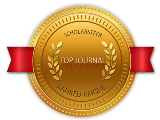Estimation of Groundwater recharge studies in Gundal Watershed, Gundlupet Taluk, Chamarajanagar District, Karnataka, India using Remote Sensing and GIS
Pages : 2138-2148
Download PDF
Abstract
Water resources in Gundal watershed are unevenly distributed in spatial and temporal domains. Effectively utilizing the water resources is an imperative task due to climate change. At present, groundwater contributes 34% of the total annual water supply and is an important freshwater resource. However, over-exploitation has decreased groundwater availability and has led to land subsidence. Assessing the potential zone of groundwater recharge is extremely important for the protection of water quality and the management of groundwater systems. this paper enlighten regarding the assessment of groundwater and groundwater potential Zones in the gundal watershed. Remote sensing and the Geographical Information System (GIS) are used to integrate five contributing factors: lithology, land cover/land use, lineaments, drainage, and slope. The weightage of factors contributing to the groundwater recharge are derived using aerial photos, geology maps, a land use database, and field verification. The resultant map of the groundwater potential zone demonstrates that the highest recharge potential area is located towards the downstream regions in the basin because of the high infiltration rates caused by gravelly sand and agricultural land use in these regions. In contrast, the least effective recharge potential area is in upstream regions due to the low infiltration of the area. In this study Groundwater Resource Estimation Committee’s methodology -1997 as followed for evaluating the groundwater recharge estimation. Rainfall infiltration method (RF) and Water table fluctuation method (WTF) based on crop duty and unit draft methods are used for groundwater recharge assessment. The study reveals that the Gundal watershed is Categorize as a critical to overexploited area.
Keywords: Geographical Information system, Groundwater recharge, infiltration, Groundwater recharge estimation, Potential Zones.
Article published in International Journal of Current Engineering and Technology, Vol.5, No.3 (June-2015)












 MECHPGCON, MIT College of Engineering, Pune, India
MECHPGCON, MIT College of Engineering, Pune, India AMET, MIT College of Engineering, Pune, India
AMET, MIT College of Engineering, Pune, India International Conference on Advances in Mechanical Sciences
International Conference on Advances in Mechanical Sciences  International Symposium on Engineering and Technology
International Symposium on Engineering and Technology International Conference on Women in Science and Engineering
International Conference on Women in Science and Engineering




